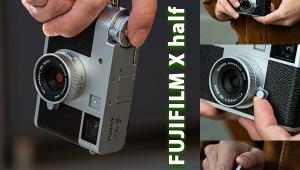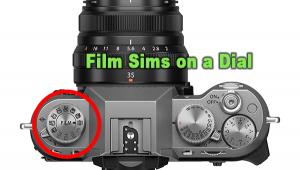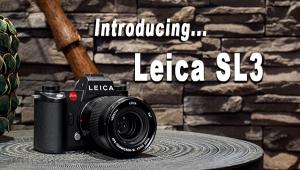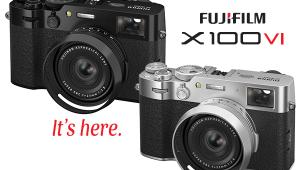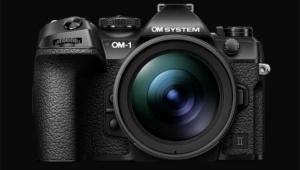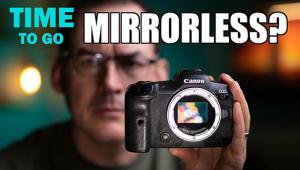The Best Photo Gear of 2019: TIPA Announces Annual Product Awards for Cameras, Lenses & Accessories
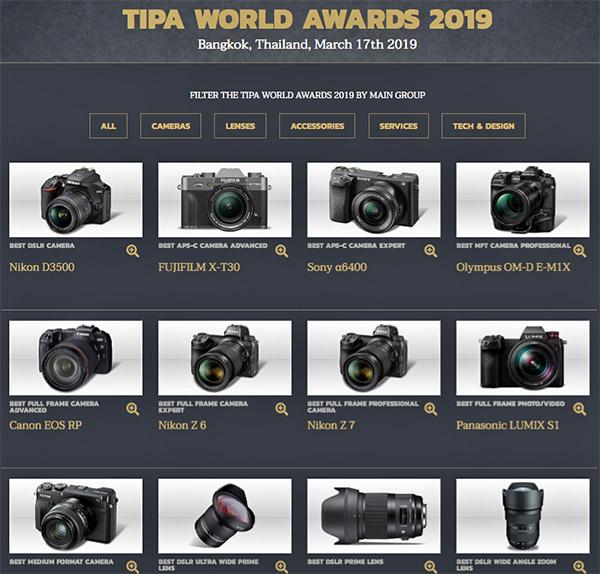
The Technical Imaging Press Association (TIPA), which includes over two dozen imaging member magazines from around the world, has announced its choices for the best photo products of 2019 in 40 different categories. Editors from TIPA's member magazines recently met in Bangkok, Thailand to pick the just announced winners. We've included 23 of the 2019 photo gear award winners below, with write-ups and product images provided by TIPA.
To see the full list of 40 TIPA World Awards for 2019, click here. To see the 2018 TIPA Awards winners, click here. To see Shutterbug's own list of the best cameras and lenses of the past year, click here.
Best DSLR Camera: Nikon D3500

This compact, and lightweight DSLR is aimed at amateurs who want to step up to a camera that takes full advantage of a wide range of NIKKOR lenses and accessories to boost their photographic fun and creativity. Its 24.2MP CMOS sensor delivers an ISO range of 100-25,600, handles 5fps continuous shooting, plus has Full HD 1080/60p video capability. With Nikon’s SnapBridge app, users can easily share images with a smartphone or connected device. They can also trigger the camera with the app, and access Nikon Image Space, a free-cloud based sharing and storage service.
Best APS-C Camera Advanced: Fujifilm X-T30
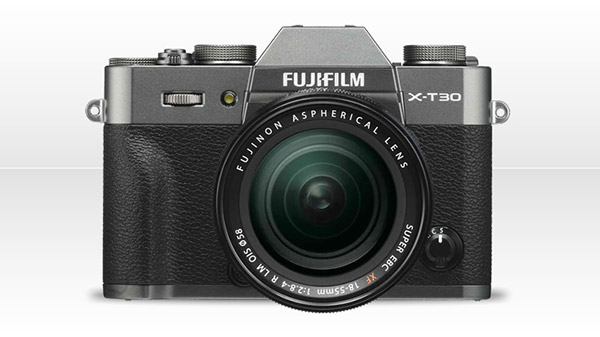
This affordable APS-C X-series camera sports a 26.1MP X-Trans CMOS 4 sensor with a new X-Processor 4 Quad Core CPU that provides very fast AF and accurate face detection. This compact and lightweight camera has numerous handling advancements, including a Focus Lever to quickly shift to a focus point and a very intuitive touch-screen panel. The X-T30 will appeal to video creators as well, offering UHD 4K or Full HD 1080p as well as high quality audio recording without the need for additional gear. Built-in Wi-Fi and Bluetooth V4.2 offers communication with the Fujifilm Camera Remote app.
Best APS-C Camera Expert: Sony A6400

Sony’s latest 24.2MP APS-C camera delivers an 11 fps framing rate with full AF/AE tracking utilizing 425 phase detection contrast detection points that pair with a new generation Bionz X processor to achieve an impressive 0.02 second AF capture. It has a standard ISO range up to 32,000 for both stills and movies that can be “pushed” to ISO 102,400 for stills. Real-time eye AF employs AI-based object recognition for enhanced accuracy, speed and tracking. For video shooters the camera has internal 4K recording with full pixel readout and no pixel binning. The magnesium alloy body has a 180-degree tiltable LCD and an XGA OLED finder.
Best MFT Camera Professional: Olympus OM-D E-M1X

With impressive specs and numerous technological advances, this new flagship in the Olympus line has been designed to appeal to pros who want high-speed framing rates, unheard of stabilization benefits, and a design that incorporates two quick-charge batteries for 870 captures per charge. Its 20.4MP Live MOS MFT sensor is powered by Dual TruePic VIII processors, allowing the camera to capture an incredible 60 fps in AF/AE lock mode, plus can store up to 35 20MP RAW frames using Pro Capture Mode. A system dubbed Intelligent Detection can be utilized to maintain focus tracking on fast-moving subjects, including trains, planes and automobiles.
Best Full Frame Camera Advanced: Canon EOS RP

Compact and versatile, the affordable EOS RP is a compact and lightweight mirrorless camera with a 26.2 Megapixel CMOS sensor with a DIGIC 8 Processor and Dual Pixel CMOS AF system. Viewing and framing is enhanced with a fully-articulating 3-inch LCD and a 2.36M dot EVF. The camera can record 4K 24/25p video and has on-board HDMI, headphone and microphone sockets. Aimed at those seeking an advanced-level yet easy to use full-frame camera the EOS RP features a guided user interface that allows users to see on screen how switching modes affects their image. Added benefits include enhanced low light auto focus capability that, with an f/1.2 lens, brings AF sensitivity to an incredible EV-5.
Best Full Frame Camera Expert: Nikon Z6
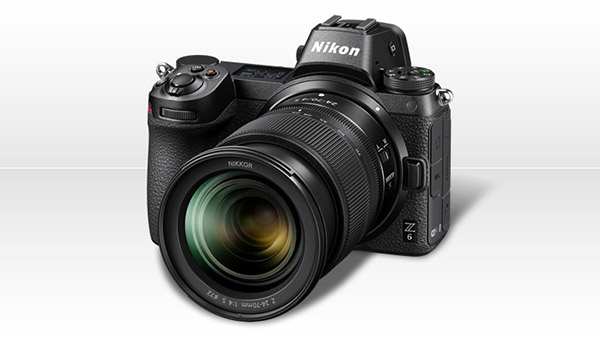
The Z 6 is aimed at photographers who want excellent performance in low light conditions and 4K UHD video with full pixel readout. The 24.5MP CMOS backside illumination sensor with focal-plane phase detection AF pixels supports a wide sensitivity range of 100-51,200 ISO and works with the latest Nikon image processing engine, the EXPEED 6. The camera has 273 focus points, enabling broad coverage of approximately 90% of the imaging area, both vertically and horizontally. A mid-range sharpening option in the Picture Control menu allows users to make textural elements within the screen sharper or softer with both still and video imaging.
Best Full Frame Professional Camera: Nikon Z7

The high-resolution Nikon mirrorless Z 7 sports a 45.7MP FX format CMOS sensor that produces large, stunning image files. It supports an ISO range of 64-25,600 ISO with expanded ISO of 32 to 102,400. The EVF has coverage of approximately 100% with the ability to set numerous shooting parameters while looking through the viewfinder. Video capabilities include 4K UHD as well as Full HD 120p shooting, and support of Active D-Lighting, electronic VR, and focus peaking. Timecode support allows for syncing video and sound from multiple devices. Use of NIKKOR Z S-Line lenses allow for quiet and smooth adjustment of exposure during video shooting.
Best Full Frame Photo/Video: Panasonic Lumix S1
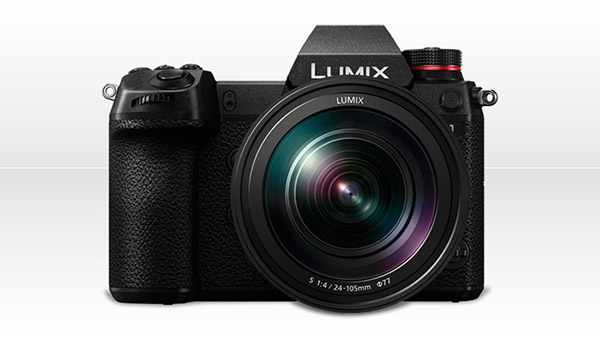
The S1 doubles as a 24.2MP still camera with very fast AF speed and tracking performance and a pro-style full-frame video camera. It delivers 4K 60p video with full-pixel readout of signals in 4K 30p/25p and complies with 4:2:2 10-bit 4K 30p/25p internal video recording and 4K 60p HDMI output plus V-Log. All that adds up to video performance and capabilities that have high appeal to content creators. The S1 incorporates a 5-axis Body IS image stabilization that, when used with S-series lenses, delivers 6-stop compensation.. For stills, the S1 offers a High Resolution mode that can be used to create 96MP images, thanks to the new Venus image high-speed signal processing capabilities. The camera also features a 1/8000 second top shutter speed with flash sync as high as 1/320 second.
Best Medium Format Camera: Fujifilm GFX 50R

Aimed at pros and advanced enthusiast photographers, the GFX 50R is equipped with a 51.4MP 43.8 x 32.9 CMOS Sensor and X-Processor Pro processing engine. The camera supports Fujifilm Film Simulation modes plus optimizes light gathering performance and image resolution for precise reproduction of the subject’s look and feel. Featuring a magnesium alloy body, the GFX 50R is weather-sealed in 64 places and is capable of operating in a wide temperature range. Lightweight and compact for its class, it also features enhanced connectivity with Bluetooth for pairing with a smartphone or tablet via the Fujifilm Camera Remote app.
Best DSLR Ultra Wide Prime Lens: Samyang XP 10mm f3.5
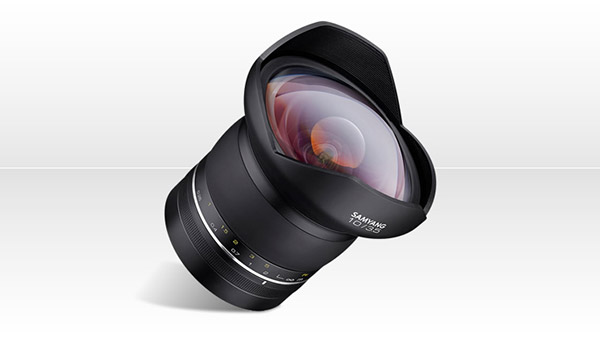
This full-frame format, ultra-wide rectilinear lens is constructed with 18 elements in 11 groups, with 3 aspherical elements, 1 high refractive element and 3 extra-low dispersion elements along with multicoated glass that helps reduce flaring and ghosting. Minimum focusing distance is 0.26 meters, which affords dramatic depth of field effects at both the narrower openings (f/22 minimum aperture) and, taking advantage of the 9-bladed diaphragm, when wide open. This manual focus lens has an aluminium alloy housing and comes with a petal-shaped lens hood.
Best DSLR Prime Lens: Sigma 40mm F1.4 DG HSM Art
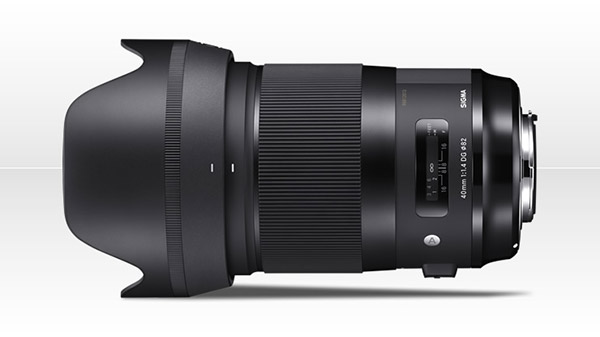
This fast lens in SIGMA’s Art line-up, which will be soon available in L-Mount as well, delivers both 8K- compatible resolution and stunning bokeh. The arrangement of three FLD and three SLD glass elements combined corrects axial chromatic aberration and magnification chromatic aberration, plus delivers exceptional sharpness at maximum aperture while it excels at low light photography. Available in a wide range of mounts, the SIGMA 40mm F1.4 DG HSM | Art is constructed with 16 elements in 12 groups, a 9-bladed diaphragm and a minimum focusing distance of 0.4 meters. For video shooters, SIGMA claims that it is the first lens in the line that was originally developed to live up to the sought-after angle of view and performance standard for a benchmark cine lens.
Best DSLR Wide Angle Zoom Lens: Tokina Opera 16-28mm f/2.8 FF
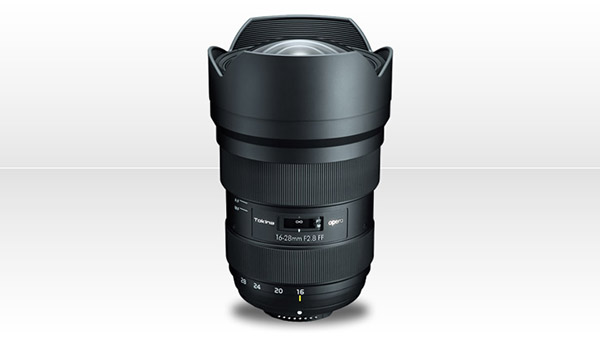
This versatile, constant aperture lens incorporates a newly designed Silent Drive module for faster, smoother and quieter AF. It is constructed with 15 elements, including 3 aspherical and 3 glass low-dispersion elements, in 13 groups, delivering significantly reduced chromatic and spherical aberrations. A large front element means minimal vignetting and low distortion, while a One-Touch Focus Clutch Mechanism makes switching from AF to manual focus easy: all the user need do is to snap the focus ring back toward the camera to engage manual. Minimum focusing distance is 0.28 meters, allowing for highly creative depth of field either wide open or closed down to its minimum f/22 aperture.
Best DSLR Telephoto Zoom Lens: Sigma 60-600mm F4.5-6.3 DG OS HSM Sports
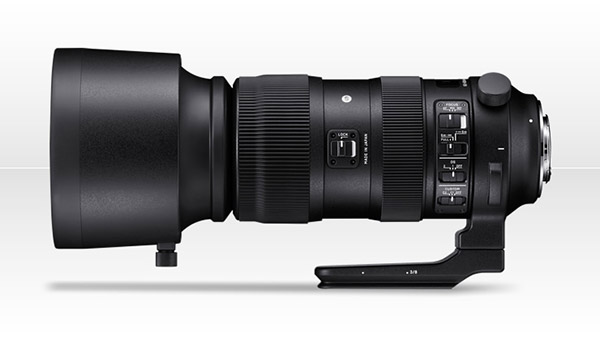
Photographers now have a lens that opens up new possibilities for creative work with an impressive 10x lens that tops out at 600mm. The SIGMA 60-600mm zoom is both dust- and splash-proof, with special water- and oil-repellent coating on the lens front. It comes with a versatile tripod socket which has a replaceable lens foot with 90-degree click stops and Manual Override that allows for selection of two full-time manual modes. Constructed with 25 elements in 19 groups, with a 9-bladed diaphragm, the lens is 120.4 x 268.9mm when “unzoomed”, an easy fit for many camera bags and backpacks.
Best DSLR Professional Zoom Lens: Sigma 70-200mm F2.8 DG OS HSM Sports
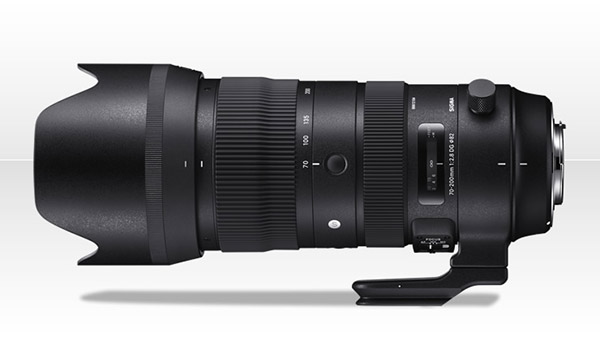
Aimed at pros and advanced enthusiast photographers, this fast lens combines a lightweight magnesium barrel with dust- and splash-proof protection and water- and oil-repellent coating to handle challenging shooting conditions. For fast moving action it combines Intelligent Optical Stabilization with an acceleration sensor, allowing the capture of subject movement without losing panning even when the camera is moved in any direction, regardless of the position of the lens. Ten low-dispersion glass elements insure high-resolution capture from centre to edge, and optimization of spherical aberration delivers a natural bokeh effect, making it a good choice for portraiture as well.
Best DSLR Professional Prime Lens: Canon EF400mm f/2.8L IS III USM

Lightweight, 5-Stop Image Stabilization and ease of handling are important considerations for photographers working in the field, and Canon’s EF400mm lens is the lightest in its class. Handling features also play an important role, and the incorporated 5-stop image stabilization and focus lock/activate controls, with full time manual available, make this an eminently hand-holdable and versatile lens. Other impressive specs include a nine-bladed diaphragm, a ring-type USM motor and a minimum focusing distance of 2.5 meters. The lens offers full time manual focusing has is constructed with 17 elements in 13 groups with both fluorite and super UD elements, as well as Air Sphere, Super Spectra and fluorine coatings.
Best APS-C Mirrorless Prime Lens: Canon EF-M32mm F/1.4 STM

A compact and lightweight prime for stills and video. Still and video photographers will appreciate the STM (stepping motor) in this EF-M lens for its smooth and quiet focus operation when taking stills and its near-silence when recording video. Compact in size and lightweight (235g) the lens features a wide focusing ring with full-time manual capability. Constructed with 14 elements in eight groups, the Super Spectra Coating technology helps minimize ghosting and flare. Its large maximum aperture delivers stunning bokeh, and its minimum focusing distance (0.23 meters) and maximum magnification of 0.25x opens up numerous creative imaging possibilities.
Best Mirrorless Prime Standard Lens: Canon RF50mm F1.2 L USM
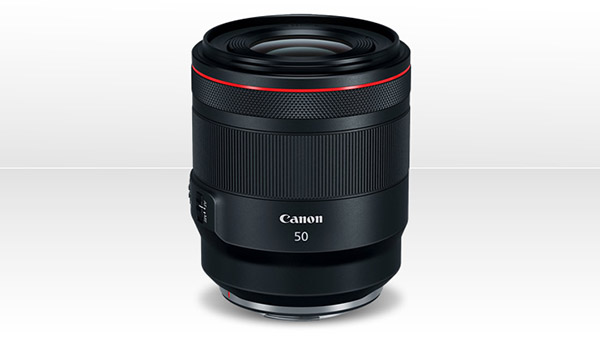
Fast and super sharp, this ultra-fast prime lens for Canon’s RF cameras is weather-sealed and is built with 15 elements in 9 groups, with UD and aspherical elements, as well as Air Sphere, Super Spectra and fluorine coatings. It has a ten-bladed diaphragm and a 40 cm minimum focusing distance with a customizable control ring that can be used for adjusting aperture, shutter speed, ISO settings and exposure compensation. Focusing is fast and silent thanks to the ring-type ultrasonic motor.
Best Mirrorless Prime Telephoto Lens: Sony FE 135mm F1.8 GM

Designed for wedding, portrait and sports photographers, the Sony 135mm has an 11 blade diaphragm that delivers stunning bokeh with circular out-of-focus highlights. The lens has 13 elements in total, including a Super ED and ED and an extreme aspherical (XA) that combine to suppress common telephoto aberrations plus maximize overall resolution. The lens also features four XD (extreme dynamic) linear motors, two for each of the focus groups, which results in fast, accurate and responsive AF. The lens has two customisable focus and hold buttons plus a linear response focusing ring that is ideal for video work.
Best Mirrorless Wide Angle Zoom Lens: Nikon Nikkor Z 14-30mm f/4 S

Featuring a design with a nearly flat front lens, the 14-30mm allows for use of filter attachments (82mm) on the front element thread. Lens construction incorporates 14 elements in all, with four ED elements and Nikon’s Nano Crystal coating to reduce flare and ghosting, plus there’s a stepping motor for smooth and quiet AF, a sought-after feature for both still and especially video capture. Sealed against dust and moisture, the lens also has a customisable control ring that can be utilised for manual focus, aperture, and exposure compensation. The lens is lightweight, at 485g.
Best Mirrorless Standard Zoom Lens: Tamron 28-75mm F/2.8 Di III RXD (Model A036)

This fast mid-range zoom for Sony E-mount cameras has specialized glass elements that control aberrations and deliver excellent resolution throughout the entire focal length range. All the lens surface is treated with Tamron’s proprietary BBAR (Broad-Band Anti-Reflection) Coating that significantly reduces ghosting and flare. An all-new high-speed AF drive system with an RXD stepping drive delivers rapid, quiet focusing action. The lens features close focusing of 0.19 meters at the wide setting as well as moisture-resistant coating construction and fluorine coating, making it ideal for outdoor and nature photography. Weighing just 550g and being 117.8mm in length, it is a highly portable lens for every photographic adventure.
Best Mirrorless Professional Lens: Sony FE 400mm F2.8 GM OSS
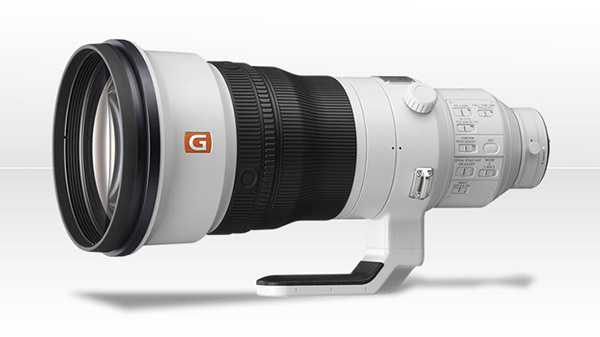
This fast tele incorporates new XD (extreme dynamic) Linear Motors that deliver higher thrust than conventional motors in current and future camera bodies. Newly designed algorithms quietly drive the lens’s large focus group for capture of fast-moving sports and wildlife subjects. The lens incorporates three fluorite elements to minimize chromatic aberration, with spherical aberration controlled through rigorous design and manufacture quality, even with the use of Sony’s high-performance 1.4X and 2.0X teleconverters. The optical design reduces the number of elements at the front of the barrel, and durable magnesium alloy components result in a low weight of 2897 grams.
Best Expert Compact Camera: Ricoh GR III

Photographers who enjoy traveling with a compact camera that allows them to “grab” quality images without carrying more cumbersome gear will welcome the GR III. The magnesium-alloy camera sports an APS-C-size 24MP sensor with sensor-shift image stabilization (three axes) and on-sensor phase detection AF. The integral 28mm lens is composed of six elements (including two aspherical) in four groups, and can focus as close as 6cm. The GR III has a built-in 2-stop ND filter, a 3” touch-enabled LCD, and a USB-C socket to output video using the Displayport standard. The camera offers exposure modes, including +/- 5-stop exposure compensation.
Best Superzoom Compact Camera: Sony RX100 VI

The compact RX100 VI features a 20.1MP Exmor RS CMOS sensor with DRAM chip and a newly designed Zeiss Vario Sonnar T* 24-200mm (equivalent) lens. Image steadiness is provided by Sony’s Optical SteadyShot system that provides a 4-stop advantage at the 200mm range. AF speed is an impressive 0.03 seconds with 315-point wide-area phase detection AF and 25 contrast detection AF points, plus the camera incorporates High-density Tracking AF technology as well as Advanced Eye AF and a Touch Focus feature. Adding to the responsiveness is 24fps shooting with AF/AE tracking for up to 233 continuous shots. The camera also delivers 4K video with advanced (S-Gamut and S-Log3) video post-production capability.


